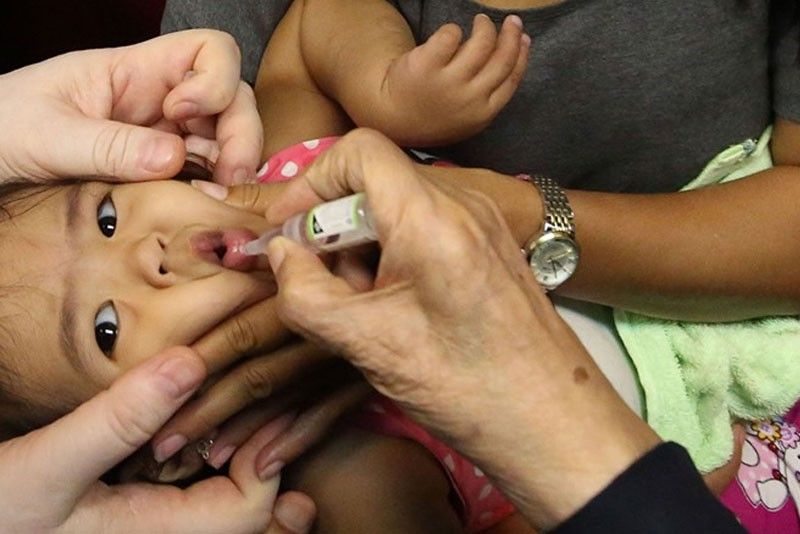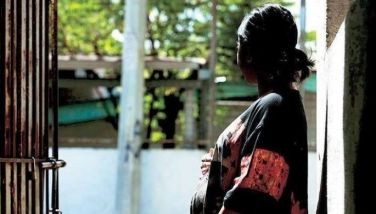Polio strain mutation confirmed; vaccines coming

MANILA, Philippines — The Department of Health (DOH) confirmed yesterday that vaccine-derived polio (VDP) Type 2 has mutated, causing the re-emergence of the disease in the country recently.
In an interview, DOH Public Health Undersecretary Myrna Cabotaje said what the country is seeing now is the mutated form of the Type 2 poliovirus which had already been eradicated globally since 2015.
“There is a mutation of VDP Type 2. It has mutated and infected a girl from Lanao del Sur who is not vaccinated,” she noted.
Cabotaje was referring to the three-year old girl from Lanao del Sur who became the Philippines’ first case of polio since the country was declared free of the disease 19 years ago.
Last Friday, the DOH confirmed the second case of polio in a five-year-old boy from Laguna who also tested positive for Type 2 polio.
The VDP virus is a strain of the weakened poliovirus that was intially included in the oral polio vaccine being given to immunize children against the fatal and debilitating disease.
However, the strain has changed over time and behaves like a natural occuring virus.
The Philippines has been free from polio since 2000 until the very recent discovery of the two children afflicted with the virus.
Mutation explained
Former Philippine Society of Microbiology and Infectious Diseases (PSMID) president Rontgene Solante explained that a previously eradicated virus can re-emerge, “especially in countries with poor immunization or poor sanitation.”
He added that “normally, a VDP virus rarely can cause an infection because it is weakened before it is administered to the children.”
“Once it is excreted into the environment from a patient previously vaccinated, it rarely causes infection. But in situations where it causes infection, it has mutated,” Solante said.
Solante added that because of a low immunization rate, “the virus has re-emerged among those that are not vaccinated.”
Vaccine
According to Cabotaje, DOH Sec. Francisco Duque III had requested the World Health Organization (WHO) to provide the Philippines with the “monovalent vaccine” for Type 2 poliovirus.
There are three types of poliovirus – Types 1, 2 and 3. But Type 2 was was no longer in circulation since 2015.
Cabotaje said when Type 2 was eradicated, WHO has been providing the country with the bivalent oral polio and injectable polio for Types 1 and 3.
The DOH is expecting the monovalent vaccines to arrive early October and these will be included in the ongoing mass vaccination campaign.
To prevent polio from further spreading, the DOH is repeating the synchronized door-to-door vaccination activities which will run for one to two weeks. This is to augment the routine immunization at the barangay health centers.
Under the program, the DOH has been giving oral polio vaccine (OPV) to all children under five years old, regardless of their previous vaccination.
Cabotaje added the monovalent vaccine will be integrated in the vaccination activities in Lanao de Sur and Laguna.
Manila and Davao will be included as the sewage system and waterways there, respectively, tested positive for the poliovirus.
After the presence of the poliovirus in the Davao River was confirmed by the Research Institute for Tropical Medicine, citizens were urged to refrain from swimming in the river as well as possibly public swimming pools.
The Davao City Water District (DCWD) has assured residents that the city’s tap water is safe to drink.
The DCWD does not source its water from the Davao River but from other sources.
“Vaccinators will go around to look for those who have not yet been given the OPV. At the same time, they will also administer the monovalent vaccine,” Cabotaje said.
She underscored the importance of having 95 percent of the target population to be covered in order to establish “herd immunity,” wherein the spread of the virus is stopped, thus protecting even those unvaccinated children.
Based on the latest data from the DOH, under its ongoing polio immunization campaign, some 5.3 million under-five chilldren are targeted to be covered in the National Capital Region, Central Luzon and Calabarzon. The data for Lanao del Sur has not been released.
“Right now, we are free of wild polio but there is circulating VDP polio. We should not miss out on any child. Otherwise, we will not eliminate this disease,” she maintained. – With Edith Regalado
- Latest
- Trending




























